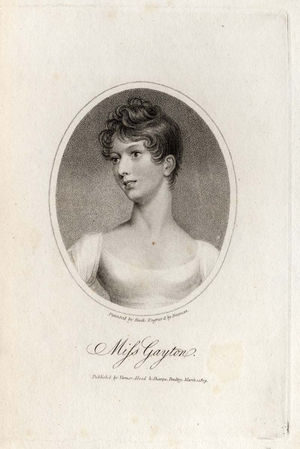Annotation:Miss Gayton's Hornpipe
MISS GAYTON'S HORNPIPE. AKA and see "Dan Cameron's Favorite," "Miss Eaton's Hornpipe," "Miss Heaton's Hornpipe]," "Sailor's Hornpipe (3)." AKA – “Miss Gaston's Hornpipe,” “Miss Grayton's Hornpipe.” Scottish, English, Irish; Hornpipe. G Major. Standard tuning (fiddle). AB (Skye): AABB (most versions). As “Miss Gayton’s Hornpipe” it appears in a surprising number of music copybook manuscripts of 19th century English musicians, including George Watson (Swanton Abbott, Norfolk, c. 1890), Miss Best (c. 1850), John Baty (Bethel, Northumberland, 1840–60), William Clarke (Feltwell, Norfolk, 1858), James Haslingden (Midlands?, 1827), Robert Dale Owen (New Lanark, Scotland, 1826), F.W. Davoll (Staffordshire?), the Carlilse manuscript (Carlilse, Cumbria, 1810), John Moore (Tyneside, 1841) and William Tildsley (Swinton, Lancashire, c. 1860) [Callaghan, 2007]. Fiddler William Irwin (Langdale, Cumbria) included it in his 1838 manuscript along with the note: “as played in Carlisle Theatre,” referring to a venue in the Cumbrian town. Shropshire poet and musician John Moore entered the hornpipe into his manuscript collection as "Miss Heaton's Hornpipe." Two versions, one as an untitled hornpipe (p. 47, No. 1) and another as "Miss Gayton's Hornpipe", can be found in the mid-19th century music manuscript of William Winter[1] (1774-1861), a shoemaker and violin player who lived in West Bagborough in Somerset, southwest England. County Cork cleric and uilleann piper James Goodman entered the tune as an untitled hornpipe in volume 1 (p. 215) of his large mid-19th century music manuscript collection.
Francis O’Neill printed the tune under the title “Sailor's Hornpipe (3)” in his Music of Ireland (1903) although he found the tune in R. Cock's & Co.'s Encyclopedia of Melody, One Thousand and Twenty-one Airs Selected from the National Music of All Countries, etc., etc., arranged by William Forde. It is not known how he might have though it had an Irish provenance. It was recorded in 1932 by accordion player Margaret McNiff Locke (along with fiddler Joe Tansey and banjo player E. McColclough), where it sounds much like a barn dance instead of a hornpipe.
Jean Duval is of the opinion that one strain of "Reel de Châteauguay is derived from "Miss Gayton's Hornpipe," and also finds motif's from "Miss Gayton's" form the core of Isidore Soucy's suite "Foins (Les)."

Miss Esther Jane Gayton[2] was a dancer and actress who played a Sylph (fairy) at Drury Lane as early as 1806. Sir Walter Scott mentions her (in the Edinburgh Annual Register, 1810) as performing in 1808 in a revival “of our old favourite, Bluebeard,” in which Miss Gayton appeared in the role previously played by Madame Parisot. In 1809 she married the Reverend William Murray, half-brother of Sir James Pulteney, 7th Baronet or Clermont, Fifeshire, whose title Murray ultimately assumed (Gentleman’s Magazine, May, 1811). She died in 1875.
George Gordon Byron—Lord Byron—mentions Miss Gayton in his lengthy verse called “English Bards and Scotch Reviewers” (1808), in the lines:
While Gayton bounds before th’ enraptured looks
Of hoear marquises and stripling dukes;

